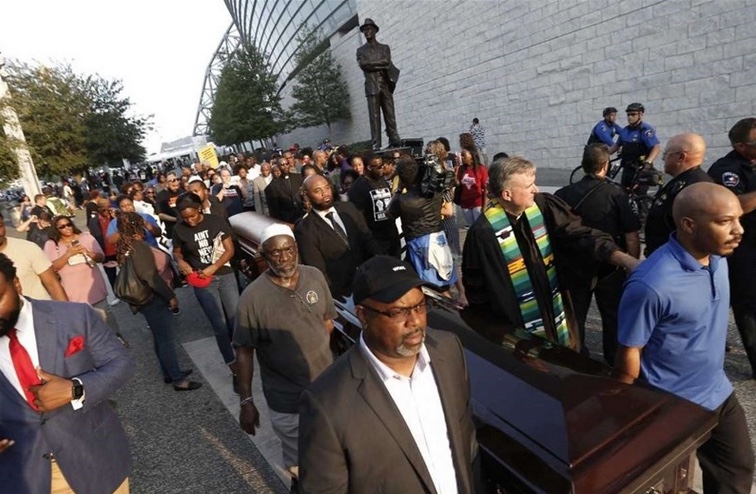The Caravan's A-Comin'
/The caravan’s a-comin’
The images are stunning. A stream of humanity stretched across a bridge, down a dusty road, marching.
What do you see when you look at the photos and footage?
The caravan’s a-comin’
What do you see? Do you see the families torn apart by the violence in Honduras?
To the journalists embedded among them, making the journey alongside them, they tell stories of horror, violence, and threats.
They move forward because they have to. They move because that which is human within them compels them. You would be moving, too. You would be marching if you were in their shoes.
The caravan’s a-comin’
What do you see?
I’m reminded of the Zimbabwean song which has become such an important tune in American churches, called Siyahamba.
We are marching in the light of God, we are marching in the light of God; we are marching in the light of God, we are marching in the light of God.
We are marching, we are marching, ooohhh,we are marching in the light of God;
We are marching, we are marching, ooohhh,we are marching in the light of God.
The caravan’s a-comin’
What do you see? Here’s what President Donald J. Trump sees:
“Let me just tell you something. I spoke with Border Patrol this morning. And I spoke to them last evening, and I spoke to them the day before. I speak to them all the time.
“And they say -- and you know this as well as anybody -- over the course of the year, over the course of a number of years, they've intercepted many people from the Middle East. They've intercepted ISIS, they've intercepted all sorts of people.
“And they said it happens all the time, from the Middle East. There's no proof of anything. There's no proof of anything. But they could very well be.
“But certainly you have people coming up through the southern border from the Middle East and other places that are not appropriate for our country. And I'm not letting them in. They're not coming in.”
The caravan’s a-comin’
What do you see?
It’s a question of perspective.
Politicians see terrorists, ne’er-do-wells, criminals, rapists, security threats, interlopers, and illegal aliens. They see brown skin, poor health, and hungry, thirsty bodies.
Disciples of Jesus see people in need; families with little hope, mothers with children, laborers with nothing to do, girls who want a chance. In other words, they see Jesus himself. “Just as you did not do it to one of the least of these, you did not do it to me,” said the king in Jesus’ parable (Matthew 25:45).
The caravan’s a-comin’
What do you see? Can you see yourself in that great march? Can you see us in that mass migration?
I’m reminded of another song that we sing at church, a hymn called “A Wilderness Wandering People”:
We are a wilderness wandering people on a journey of the soul.
May we find our destination in our longing to be whole.
Our Holy God is calling to us.
With Jesus by our side may compassion be our compass;
may the Spirit be our guide.
May we cherish all our children, let us heal our family’s pain.
Help us cure our city’s madness, let love and justice reign.
Reconciled with one another in prayer and praise and song,
we’re the body of Christ together and we know that we belong.
The caravan’s a-comin’
What do you see?




